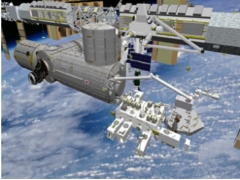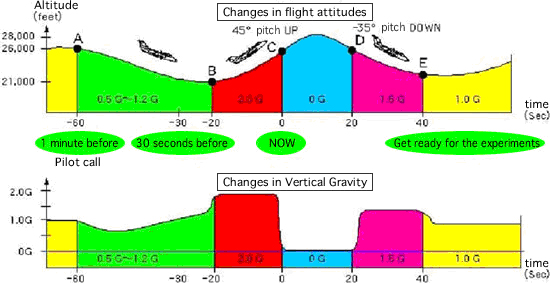Tokyo, Japan (12 August 2010) - For the fifth time in a row, a research proposal from Thailand was selected to participate on the JAXA (Japan Aerospace and Exploration Agency) Zero-Gravity Flight program, which has been running since 2002. This year, the research proposal "Mortality Risk of Heart Failure Guinea Pig during
Parabolic Flight" proposed by three medical students (namely Mr. Pattara Rattananwong, Mr. Wasawat Vutthikravit and Mr. Attawit Charoensri) from Ramathibodi Hospital, Mahidol University is chosen for the in-flight experiment at the Mitsubishi F-15 manufacturing facility adjacent to the old Nagoya Airport this December 15th-16th, 2010.

For the past five years, The ASEAN countries have been given the opportunity to submit their research proposals to fly aboard the JAXA parabolic flight aircraft. This year, besides Thailand, Malaysian research proposal - the "Investigation of Patterned Ferrofluid in Hypergravity and Microgravity", submitted by Mr. Ho Kent Loong and Mr. Chong Theng Yee from Multimedia University, is also selected to fly on the same flight.
As a member of the JAXA's Parabolic Flight Selection Committee, Dr. Sawat Tantiphanwadi of National Science and Technology Development Agency (NSTDA) congratulated the Thai student team for the winning proposal. He will help the students to develop and test the experiment to be flight-qualified.
The parabolic flight is a maneuver flown by an aircraft that follows a parabolic path in order to simulate a weightlessness condition inside the aircraft. The aircraft will adjust its flying altitude, so that, the weightlessness condition can be maintained for as long as possible. The concept is similar to when a ball is thrown in an upwards arc in an attempt to keep the ball in the air as long as possible. On these parabolic flights, the duration of weightlessness is approximately 20 seconds each time the parabolic maneuver is flown.
During the 20 seconds that the plane drops, micro-gravity conditions are temporarily created in the compartment, and the students can quickly conduct their experiments before the plane soars upwards again. Although 20 seconds may sound like a very short time, many scientific and technological experiments can actually be conducted. The experiments in a parabolic flight is the first step of doing future research or experiments under micro-gravity conditions in outer space such as in the International Space Station.
“Space education teaches students to see the big picture. Instead of seeing only what happens in his own home, his province, or Thailand; the student will start to see it from the perspective of the whole world, other planets or galaxies,” Dr. Sawat said. “When this happens, they will learn how fragile and vulnerable our planet is.'' he added.

